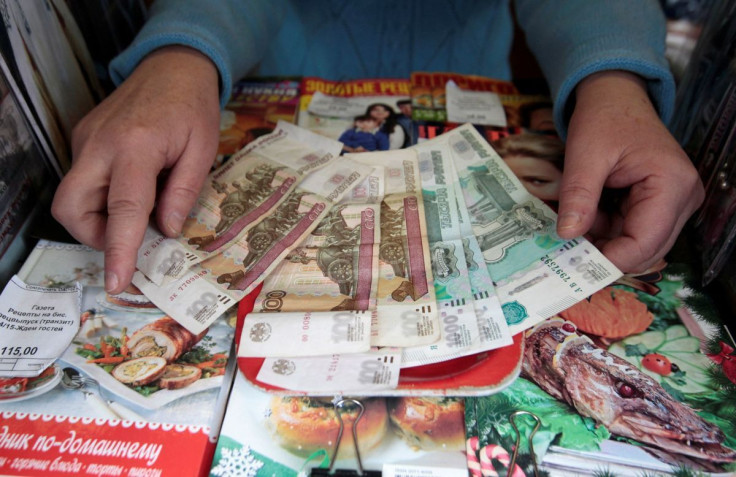Euro Slips, Ruble Slumps As Russia-Ukraine Tensions Boil

The Russian ruble sank and the euro nursed sharp losses against the U.S. dollar on Monday as the West ramped up sanctions against Russia over its Ukraine invasion, prompting investors to shun riskier currencies.
Western allies have ramped up efforts to punish Russia with new sanctions including cutting some of its banks off the SWIFT financial network and limiting Moscow's ability to deploy its $630 billion foreign reserves and shuttering their airspace to Russian aircraft. Companies also reported divestment plans.
After plunging 30% to a record low of 120 per dollar, the rouble recovered some ground, to trade down about 15% on the day at 109 per dollar, as an emergency rate hike and other urgent measures adopted by the Russian central bank helped it trim losses.
"The initial knee-jerk reaction is fading from the real extreme flight to safety that we saw at the open yesterday," said Karl Schamotta, chief market strategist at Corpay.
Russia's foreign ministry on Monday said talks between Ukraine and Russia had begun, shortly after the Ukrainian side had said the same. Russia launched an invasion of Ukraine on Thursday, calling its actions in the neighboring country a "special operation."
News of the talks helped soothe some nerves and the euro pared losses to trade down 0.48% on the day at $1.1213, after earlier falling more than 1% to a four-day low of $1.1121.
"The euro is still suffering, given that the euro area is on the front lines, that it is most exposed to a rise in prices or to a potential disruption in energy supplies," Schamotta said.
"Traders are very skeptical of holding euro positions," he said.
General aversion to risk kept the Japanese yen and the Swiss franc well supported. With the greenback down 0.15% against the yen and 0.77% lower against the franc.
While a jump in the price of oil, one of Canada's main exports, helped support the Canadian currency, investors' hesitancy to take on risk kept a lid on the loonie. The Canadian dollar was up about 0.2% at 78.89 U.S. cents.
Besides geopolitical tensions, investors also remain focused on some key economic data releases expected later this week, including U.S. nonfarm payrolls due Friday, that could help shape the U.S. Federal Reserve's thinking as it gears up to raise interest rates.
Markets are now pricing in a 90% chance the U.S. Federal Reserve will hike interest rates by 25 basis points at its March meeting, according to CME's Fedwatch tool.
© Copyright Thomson Reuters {{Year}}. All rights reserved.





















